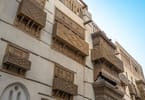NEW YORK, N.Y. – Met Museum released schedule of exhibitions through December 2013.
NEW EXHIBITIONS
Impressionism, Fashion, and Modernity
February 26–May 27, 2013
Impressionism, Fashion, and Modernity will present a revealing look at the role of fashion in the works of the Impressionists and their contemporaries. Some 80 major figure paintings, seen in concert with period costumes, accessories, fashion plates, photographs, and popular prints, will highlight the vital relationship between fashion and art during the pivotal years, from the mid-1860s to the mid-1880s, when Paris emerged as the style capital of the world. With the rise of the department store, the advent of ready-made wear, and the proliferation of fashion magazines, those at the forefront of the avant-garde—from Manet, Monet, and Renoir to Baudelaire, Mallarmé, and Zola—turned a fresh eye to contemporary dress, embracing la mode as the harbinger of la modernité. The novelty, vibrancy, and fleeting allure of the latest trends in fashion proved seductive for a generation of artists and writers who sought to give expression to the pulse of modern life in all its nuanced richness. Without rivaling the meticulous detail of society portraitists such as Tissot or Stevens, or the graphic flair of fashion plates, the Impressionists nonetheless engaged similar strategies in the making (and in the marketing) of their pictures of stylish men and women that sought to reflect the spirit of their age.
The exhibition is made possible in part by The Philip and Janice Levin Foundation and the Janice H. Levin Fund, and the William Randolph Hearst Foundation.
Additional support is provided by Renée Belfer.
The exhibition is supported by an indemnity from the Federal Council on the Arts and the Humanities.
The exhibition was organized by The Metropolitan Museum of Art, New York, the Art Institute of Chicago, and the Musée d’Orsay, Paris.
Accompanied by a catalogue.
Cambodian Rattan: The Sculptures of Sopheap Pich
February 23–June 16, 2013
This exhibition presents ten works by the contemporary Cambodian artist Sopheap Pich (born 1971), who lives and works in Phnom Penh. It is part of the Museum’s contribution to the New York-wide Season of Cambodia, to be held in spring 2013. Pich works principally in rattan and bamboo. Inspired by elements of the human anatomy and plant life, his work embodies his memories of culture and place, informing those memory images in complex ways that imply deeper levels of meaning. Dispersed among three gallery spaces, the exhibition will include Morning Glory (2011), a spectacular construction with embedded messages, which both evoke the contemporary landscape of Cambodia and embody memories of times when much of the population was reduced to cooking the plant as a source of nourishment.
The exhibition and related programs are made possible by Cynthia Hazen Polsky and Leon B. Polsky.
At War with the Obvious: Photographs by William Eggleston
February 26–July 28, 2013
The American photographer William Eggleston (born 1939) emerged in the early 1960s as a pioneer of modern color photography. Now, 50 years later, he is arguably its greatest exemplar. This exhibition presents the work of this idiosyncratic artist, whose influences are drawn from disparate if surprisingly complementary sources—from Walker Evans and Henri Cartier-Bresson in photography to Bach and late Baroque music. Many of Eggleston’s most recognized photographs are lush studies of the social and physical landscape found in the Mississippi delta region that is his home. From this base, the artist explores the awesome and, at times, raw visual poetics of the American vernacular.
The exhibition celebrates the fall 2012 acquisition of 36 dye transfer prints by Eggleston that dramatically expanded the Metropolitan Museum’s collection of this major American artist’s work. It added the entire suite of Eggleston’s remarkable first portfolio of color photographs, 14 Pictures (1974), 15 superb prints from his landmark book, William Eggleston’s Guide (1976), and seven other key photographs that span his career.
The exhibition is made possible in part by Renée Belfer.
Msewu
Marichi 5-Meyi 27, 2013
James Nares’s mesmerizing 2011 video of the same name, an important addition to the Metropolitan’s growing collection of time-based art, receives its New York premiere. This new acquisition is accompanied by an installation of over 60 works selected by the artist from the Metropolitan’s diverse collections
Press preview: Monday, March 4, 10:00 a.m.-noon
Photography and the American Civil War
April 2–September 2, 2013
Some 750,000 lives were lost between 1861 and 1865, making the conflict between North and South the nation’s most deadly war. If the “War Between the States” was the great test of the young republic’s commitment to its founding precepts, it was also a watershed in photographic history as the camera recorded from beginning to end the heartbreaking narrative of the epic war. Focusing on the evolving role of the camera during the Civil War, this exhibition will feature a wide variety of images including: haunting battlefield landscapes strewn with human remains; intimate studio portraits of armed Confederate and Union soldiers preparing to meet their destiny; rare multi-panel panoramas of Gettysburg and Richmond; diagnostic medical studies of wounded soldiers who survived the war’s last bloody battles; and portraits of Abraham Lincoln and his assassin John Wilkes Booth.
There has been no major exhibition or scholarly survey in New York City featuring Civil War photographs in many decades; this show is timed to coincide with the 150th anniversary of the Battle of Gettysburg (July 1863). The exhibition will draw extensively on the Museum’s celebrated holdings of Civil War photographs by Mathew Brady, Alexander Gardner, Timothy H. O’Sullivan, and George Barnard, among many others, and will also include judicious selections from important American private and public collections.
The exhibition is made possible by The Horace W. Goldsmith Foundation.
Accompanied by a catalogue.
PUNK: Chaos to Couture
May 9–August 14, 2013
The exhibition, PUNK: Chaos to Couture, organized by The Costume Institute, will examine punk’s legacy, from its birth in the 1970s through its continuing influence on high fashion today. The relationship between the punk concept of ‘do-it-yourself’ and the couture concept of ‘made-to-measure’ will be compared and contrasted through materials, techniques, and decorative embellishments. Original punk garments will be juxtaposed with recent, directional fashions to illustrate how designers have borrowed punk’s visual symbols in their search for new ideals of beauty and new definitions of fashionability. Presented as an immersive multimedia experience in themed galleries, the clothes will be animated with period music videos and soundscaping audio techniques. The approximately 50 designers in the exhibition will range from Miguel Adrover and Azzedine Alaïa to Yohji Yamamoto and Vivienne Westwood.
The exhibition is made possible by Moda Operandi.
Additional support is provided by Condé Nast.
The Iris and B. Gerald Cantor Roof Garden
May 14 –November 3, 2013 (weather permitting)
An installation in the most dramatic outdoor space for sculpture in New York City: The Iris and B. Gerald Cantor Roof Garden, which offers a spectacular view of Central Park and the New York City skyline. Beverage and sandwich service will be available from 10:00 a.m. until closing, including Friday and Saturday evenings.
The exhibition is made possible by Bloomberg.
Additional support is provided by Cynthia Hazen Polsky and Leon B. Polsky.
Search for the Unicorn: An Exhibition in Honor of The Cloisters’ 75th Anniversary
May 15–August 18, 2013
Given by John D. Rockefeller, Jr., in time for the opening of The Cloisters in 1938, the Unicorn Tapestries are its best-known masterpieces; yet, 75 years later, their history and meaning remain elusive. They have been seen both as complicated metaphors for Christ and as emblems of matrimony, and they are beloved as quaint indications of medieval notions about the natural world. Search for the Unicorn, a focused exhibition of some 40 works of art drawn from the collections of the Metropolitan, sister institutions, and private collections, will invite audiences to see the Unicorn Tapestries anew, as the finest expression of a subject widely treated across cultures, and in both European art and science, from the Middle Ages through the Renaissance.
The Civil War and American Art
May 27–September 2, 2013
This major loan exhibition will explore how American artists responded to the Civil War and its aftermath. The exhibition follows the trajectory of the conflict: from the palpable unease on the eve of war to the heady optimism that it would be over with a single battle, to the growing realization that this conflict would not end quickly, to grappling with the issues surrounding emancipation, the need for reconciliation as the war ended, and the uncertainty about how to put the country back together in its wake. It will feature some of the finest works made by leading figure painters such as Winslow Homer and Eastman Johnson, landscape painters such as Sanford R. Gifford and Frederic E. Church, and photographers such as Timothy H. O’Sullivan and George Barnard. The exhibition at the Metropolitan coincides with the 150th anniversary of the Battle of Gettysburg (July 1863)and the New York City Draft Riots (July 1863), violent disturbances that made New Yorkers more painfully aware than ever before of the war and its implications.
The exhibition is made possible by an anonymous foundation.
Additional support is provided by the Gail and Parker Gilbert Fund and the Enterprise Holdings Endowment.
It was organized by the Smithsonian American Art Museum.
Education programs are made possible by the Mr. and Mrs. Raymond J. Horowitz Foundation for the Arts.
The exhibition is supported by an indemnity from the Federal Council on the Arts and the Humanities.
Accompanied by a catalogue.
Ken Price Sculpture: A Retrospective
June 18–September 22, 2013
This long-overdue exhibition—the first major museum retrospective devoted to the artist’s work in New York—showcases the artist’s unique and groundbreaking approach to sculpture. Including the full range of Price’s innovative work, with nearly 75 sculptures dating from 1959 to 2011, and 11 late works on paper, the exhibition aims to situate his art beyond the realm of craft and into the larger narrative of modern sculpture. The artist’s close friend, the architect Frank O. Gehry, collaborated on the exhibition design.
This exhibition was organized by the Los Angeles County Museum of Art. It was made possible through major grants from the LLWW Foundation and The Andy Warhol Foundation for the Visual Arts.
Accompanied by a catalogue.
The Cyrus Cylinder and Ancient Persia: Charting a New Empire
Juni 20–Ogasiti 4, 2013
This exhibition will consist of 17 works on loan from the Department of the Middle East in the British Museum. It will focus on the Cyrus Cylinder, a clay cylinder from Babylon that contains an account of the conquest of Babylon by Cyrus in 539 B.C.; of his restoration to various temples of statues removed by Nabonidus, the previous king of Babylon; and of his own work at Babylon. The cylinder has sometimes been described as the “first charter of human rights,” but it in fact reflects a long tradition in Mesopotamia where, from as early as the third millennium B.C., kings began their reigns with declarations of reform. The Cylinder has resonances far beyond Iranian cultural heritage, having been found in Iraq and also being of interest to the Jewish community. Many have understood the text of the Cylinder to discuss the return of deported peoples to their homeland, and compared it with Biblical accounts that mention the role of Cyrus in the return. Indeed, it is thought to be at this time that the Jews exiled by Nebuchadnezzar were able to return to Israel and build the Second Temple. The exhibition will include other iconic works of the Achaemenid period, such as the Darius cylinder seal and the bracelet and votive plaque from the Oxus Treasure, which illustrate other innovations of the Persian Empire, such as new writing practices, religious beliefs, and currency, and which put the Cylinder itself into Judeo-Christian context by introducing Biblical texts mentioning Cyrus.
The exhibition is made possible by the NoRuz at the Met Fund.
The exhibition is supported by an indemnity from the Federal Council on the Arts and the Humanities.
Accompanied by a catalogue.
ZOTHANDIZA ZA Mlendo
Hours — Main Building
Lachisanu ndi Loweruka
9:30 am-9:00 pm
Lamlungu, Lachiwiri-Lachinayi
9:30 am-5:30 pm
Hours — The Cloisters Museum and Gardens
March-October:
Lachiwiri-Lamlungu
9:30 am-5:15 pm
November-February:
Lachiwiri-Lamlungu
9:30 am-4:45 pm
Met Holiday Mondays in the Main Building and The Cloisters:
March 25, April 1, and May 27, 2013
9:30 am-5:30 pm
Lolemba ena onse otsekedwa; Jan. 1, Thanksgiving, ndi Dec. 25 kutsekedwa
Note: Closing time for Met Holiday Mondays on December 24 and 31 will be 5:00 p.m.
Recommended Admission
(Includes Main Building and The Cloisters Museum and Gardens on the Same Day)
Adults $25.00, seniors (65 and over) $17.00, students $12.00
Members and children under 12 accompanied by adult free
Express admission may be purchased in advance at www.metmuseum.org/visit
For More Information (212) 535-7710; www.metmuseum.org
ZOMWE MUNGACHITE PA NKHANIYI:
- With the rise of the department store, the advent of ready-made wear, and the proliferation of fashion magazines, those at the forefront of the avant-garde—from Manet, Monet, and Renoir to Baudelaire, Mallarmé, and Zola—turned a fresh eye to contemporary dress, embracing la mode as the harbinger of la modernité.
- Without rivaling the meticulous detail of society portraitists such as Tissot or Stevens, or the graphic flair of fashion plates, the Impressionists nonetheless engaged similar strategies in the making (and in the marketing) of their pictures of stylish men and women that sought to reflect the spirit of their age.
- Dispersed among three gallery spaces, the exhibition will include Morning Glory (2011), a spectacular construction with embedded messages, which both evoke the contemporary landscape of Cambodia and embody memories of times when much of the population was reduced to cooking the plant as a source of nourishment.






















